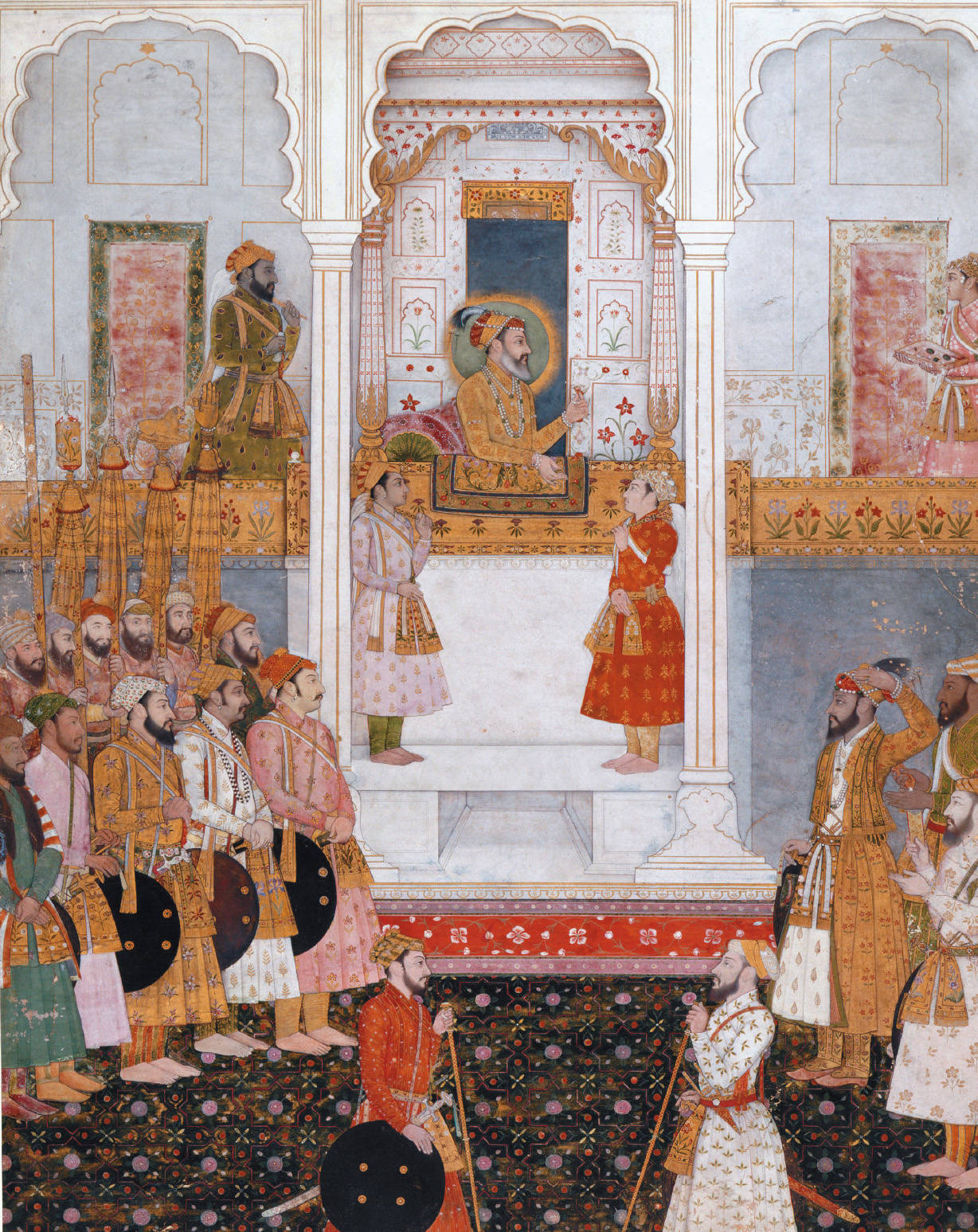Introduction
CHAPTER THIRTEEN
Political Transformations
Empires and Encounters
1450–1750

Only a few pedestrians crossing Moscow’s central square actually witnessed the death of their country, the Soviet Union—a communist giant and archrival of the United States during the cold war. It was about 7:30 p.m. on December 25, 1991, when the red flag of the Soviet Union was lowered for the last time from its perch high above the Kremlin, replaced by the tricolor flag of the new Russian republic. Soviet President Gorbachev formally resigned his office and gave a brief farewell address to the citizens of a now vanished country. Those events symbolized many endings—of the Communist Party in the land of its birth, of a state-controlled economy, of socialism as a viable ideology, of an international superpower. It also marked the end of an empire, for the Soviet Union had maintained the old Russian Empire, constructed over many centuries, bringing Ukrainians, Lithuanians, Georgians, Kazaks, and many other peoples under Russian rule. Now that empire splintered into fifteen separate and independent states. While many rejoiced in the collapse of the often brutal and economically bankrupt Soviet regime, others mourned the loss of empire and the great power status that it conveyed. In 2005, Russian President Vladimir Putin declared the Soviet collapse “the greatest geopolitical catastrophe of the twentieth century . . . a genuine tragedy.” Many of his countrymen agreed.
THE DOWNFALL OF THE RUSSIAN EMPIRE/SOVIET UNION was but the last of a long list of empires that perished during the twentieth century: the Austro-Hungarian, German, and Ottoman empires after World War I; the British, French, Belgian, Italian, and Portuguese empires in the aftermath of World War II. Elsewhere, Uighurs and Tibetans challenged Chinese rule, while Cubans, Vietnamese, Afghans, and others resisted American domination. Empire building was thoroughly discredited during the twentieth century as “imperialist” became a term of insult rather than a source of pride.
How very different were the three centuries (1450–1750) of the early modern era, when empire building was a global process! Of those empires, none were more significant than the European colonies—Spanish, Portuguese, British, French, and Dutch—constructed all across the Western Hemisphere. Within those empires, vast transformations took place: old societies were destroyed, and new societies arose as Native Americans, Europeans, and Africans came into sustained contact with one another for the first time in world history. It was a revolutionary encounter with implications that extended far beyond the Americas themselves.
SEEKING THE MAIN POINT
In what ways did European empires in the Americas resemble their Russian, Chinese, Mughal, and Ottoman counterparts, and in what respects were they different? Do you find the similarities or the differences most striking?
But European empires in the Americas were not alone on the imperial stage of the early modern era. Across the immense expanse of Siberia, the Russians constructed what was then the world’s largest territorial empire, making Russia an Asian as well as a European power. Qing (chihng) dynasty China penetrated deep into Inner Asia, doubling the size of the country while incorporating millions of non-Chinese people who practiced Islam, Buddhism, or animistic religions. On the South Asian peninsula, the Islamic Mughal Empire brought Hindus and Muslims into a closer relationship than ever before, sometimes quite peacefully and at other times with great conflict. In the Middle East, the Turkish Ottoman Empire reestablished something of the earlier political unity of heartland Islam and posed a serious military and religious threat to European Christendom.
Thus the early modern era was an age of empire. Within their borders, those empires mixed and mingled diverse peoples in a wide variety of ways. Those relationships represented a new stage in the globalization process and new arenas of cross-cultural encounter. The transformations they set in motion echo still in the twenty-first century.
A Map of Time
| 1453 | Ottoman conquest of Constantinople |
| 1464–1591 | Songhay Empire in West Africa |
| 1480 | Russia emerges from Mongol rule |
| 1494 | Treaty of Tordesillas divides the Americas between Spain and Portugal |
| 1501 | Safavid Empire established in Persia/Iran |
| 1519–1521 | Spanish conquest of Aztec Empire |
| 1526 | Mughal Empire established in India |
| 1529 | Ottoman siege of Vienna |
| 1530s | First Portuguese plantations in Brazil |
| 1532–1540 | Spanish conquest of Inca Empire |
| 1550 | Russian expansion across Siberia begins |
| 1565 | Spanish takeover of Philippines begins |
| 1607 | Jamestown, VA: first permanent English settlement in Americas |
| 1608 | French colony established in Quebec |
| 1680–1760 | Chinese expansion into Inner Asia |
| 1683 | Second Ottoman siege of Vienna |
| After 1707 | Fragmentation of Mughal Empire |